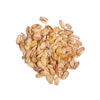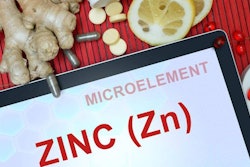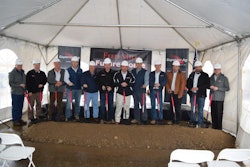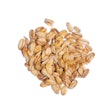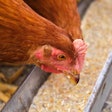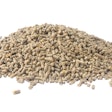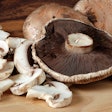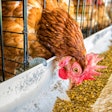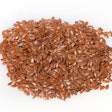
Feed formulation remains 10 percent science and 90 percent experience, not because there is no sufficient scientific background to support this exercise of balance, but rather because it remains a job learned after college. Not many universities teach feed formulation, not even at post-graduate years, and even less — if any — go into any serious depth on the matter.
Some graduates with animal nutrition courses in their curriculum have been in a class where an oral presentation was made on how feed is formulated. A few fortunate ones had the experience of formulating a real diet using a feed formulation program on a computer. Even then, it takes years of trial and error to be able to fully comprehend why some formulas are possible, whereas others will not work in the field. The following “secrets” are topics often neglected and come from my own experiences.
1. There is more iron than seen on paper
Most formulas for monogastric animals are fortified with up to 100 ppm iron, usually from iron salts like iron sulphate. This usually is more than sufficient to cover the animal's needs, ignoring iron contributions from natural ingredients, such as corn, wheat and soya. This is normal practice followed for all trace minerals like iron. In the case of iron, however, there is often a further iron source, that of dicalcium or monocalcium phosphate. These calcium and phosphorus (mainly) sources can contain up to 8,000 ppm iron, whereas more viable sources of phosphorus, such as phosphate rock, contain up to 19,000 ppm iron (NRC, 2012). Adding 10 kg/MT of dicalcium phosphate (8,000 ppm iron) will provide the finished complete diet with an extra 80 ppm of iron. This would have been 190 ppm extra if rock phosphate was used instead.
In addition, some feeds for young animals are fortified with a yellow dye, which is usually iron oxide, at 1 kg/MT — a usual dosage. This equals to another 700 ppms (iron oxide contains roughly 70 percent or 70,000 ppm iron). Here the problem is not so much on animal toxicity or environmental pollution but on the fact that Escherichia coli, a pathogenic bacteria species endemic in the hindgut, thrives on excess iron (and protein). Controlling total iron concentration in sensitive feeds requires more than actually checking levels against the trace mineral premix label!
2. Limestone is not just calcium carbonate
This is a common misconception I was ascribing to right after graduate college. It took my boss to tell me that pure (chemical) calcium carbonate is not the same as limestone. Pure calcium carbonate contains 38 percent calcium, but limestone can contain from 22 up to 38 percent calcium (in its most pure form). The difference in calcium concentration is natural contaminants from the process of mining limestone from earth mines. Depending on the source, location and process, calcium concentration can be quite different from what is anticipated.
The use of calcium carbonate as a carrier and flow agent often explains why feed sample analyses always show calcium to be much higher than feed specifications.
Again, this would not be a problem for most animals, but we have layer hens, dairy cows and young piglets that require more precision regarding their calcium intake. Too much and they have problems, not enough and they do not perform well. This is why many have abandoned limestone or use it only in non-sensitive feed formulas, preferring the more standardized form of chemical, feed-grade calcium carbonate.
3. There is calcium everywhere
Calcium carbonate, even in its chemical form, is a very inexpensive material, and it is quite often used as a carrier for a number of additives and most premixes and concentrates containing a high proportion of minerals. In addition, it is often added, most usually in the form of limestone, as a flowing agent in soybean meal and other such “oily” protein sources of vegetabe origin. The inclusion rate is about 0.5 percent, which is equivalent to 1 kg of extra limestone per metric ton complete feed with an average inclusion rate of 20 percent for soybean meal. Perhaps the use of calcium carbonate as a carrier and flow agent often explains why feed sample analyses always show calcium to be much higher than feed specifications. A slight excess of calcium is not necessarily detrimental, but certain classes of livestock and poultry suffer from excess calcium in their feed.
4. Can inorganic minerals be as bioavailable as organic ones?
Indeed, certain central authorities have concluded, based on many experiments, that not all organic forms are better in terms of bioavailability when compared with inorganic forms. In other words, the established norm that organics are always more bioavailable than inorganic trace minerals is erroneous. There are inorganic forms that are as available or even more than certain organic trace minerals. At the end of the day, it is the individual product that needs to be examined, and even then, not only in its pure chemical form, but also in terms of contaminants. For example, the presence of MnO2 contaminant in manganese oxide ore diminishes the bioavailability of manganese, even though the amount of total manganese appears similar or higher.
5. A word about phytase
Not all phytase products in the market are the same. They all differ in technical aspects, and above all, in bioefficacy. But once a specific product is selected, the manufacturer’s recommendations should be used as far as phosphorus release levels are concerned. In general, a single dosage of phytase will release 0.08 to 0.10 percent phosphorus as bioavailable (poultry) or digestible (pigs). New generation phytases can release more, and the same is true if additional normal phytase is added.
It is interesting to note that many manufacturers ensure they exceed the declared efficacy per dosage to guard against potential losses, but this is another story. In times of phosphate high prices, a second dosage of phytase can be calculated as 50 percent as efficacious as the first one — in lieu of more concrete data from the specific manufacturer. In other words, the second dosage of phytase will release an additional 0.04 to 0.05 percent bioavailable or digestible phosphorus.
Read more about feed formulation: Animal feed formulation principles: A crash course

